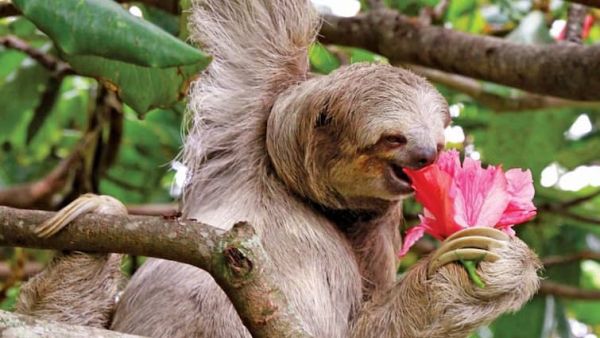
World Sloth Day 2025 celebrates one of nature’s most intriguing and misunderstood creatures. Known for their incredibly slow pace, sloths embody a lifestyle that’s calm, patient, and perfectly adapted to their rainforest homes. But there’s far more to these sleepy, tree-dwelling mammals than meets the eye. From unusual bathroom habits to astonishing swimming skills, sloths are full of surprises. Here are eight fascinating facts about sloths that will change how you see these seemingly lazy, yet incredibly resilient creatures
1. They Poop Just Once A Week
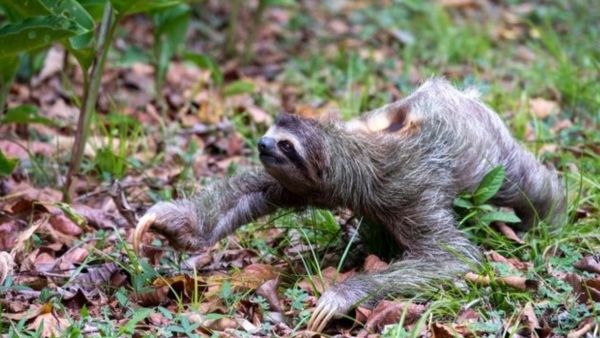
Sloths are famous for being slow, but even their bathroom habits are extremely sluggish. hese animals defecate only once every seven days and when they do, it’s a massive event. A single poop session can account for nearly a third of their total body weight. To make things more interesting, sloths climb down from their trees to do this, which puts them at great risk from predators. Scientists believe this odd ritual might help them fertilise the trees they live in, strengthening their bond with their habitat.
2. Their Fur Is A Living, Breathing Microcosm
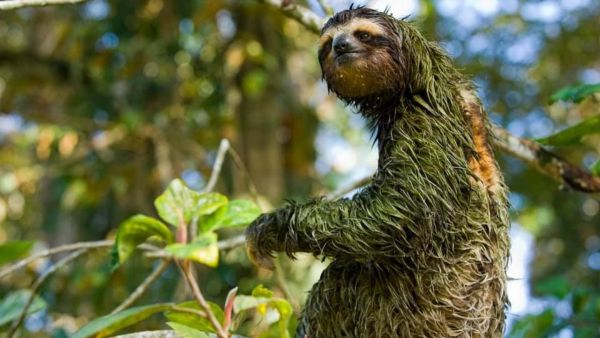
A sloth’s fur isn’t just for warmth, it’s a miniature ecosystem. Tiny algae, fungi, and insects live symbiotically in their thick, coarse hair. This natural green tint helps camouflage them from predators while also creating a unique, living habitat. The fur even houses special moths that depend entirely on sloths to survive. These organisms contribute nutrients to the algae, which sloths occasionally ingest during grooming, gaining extra nutrition. So, every time you see a sloth hanging still in the forest, remember, it’s hosting an entire microscopic world on its back.
3. Sloths Have A Truly Unique Way Of Giving Birth
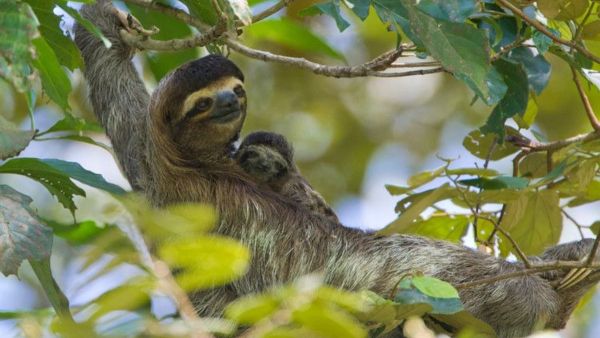
When it comes to childbirth, sloths take “hanging in there” quite literally. Female sloths give birth while dangling upside down from tree branches. The baby sloth instinctively grabs onto its mother’s belly the moment it’s born, clinging tightly to avoid falling. It's a delicate process for these mammals. If a newborn accidentally falls, most mothers descend to retrieve it, showing just how caring and intelligent these creatures are despite their slow movements.
4. Sloths Are Practically Blind In Bright Daylight

Most sloths have a rare genetic condition called rod monochromacy, which makes them colour-blind and extremely sensitive to light. In bright daylight, their vision becomes almost useless, forcing them to rely on their strong sense of touch and spatial memory to move around. This is one reason they prefer the safety of shady tree canopies. Their slow, deliberate movements aren’t just laziness. In the soft twilight of the rainforest their vision improves, allowing them to navigate comfortably through the trees.
5. It Can Take Up To 30 Days For A Sloth To Digest A Single Leaf
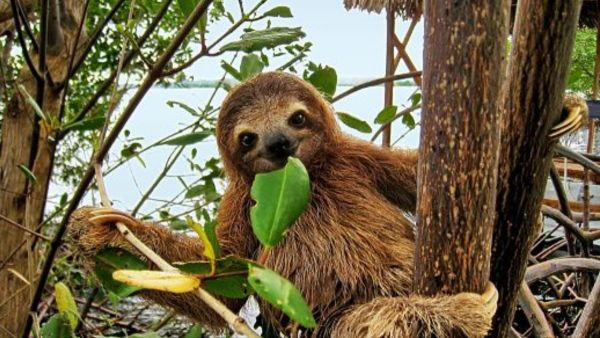
Sloths have one of the slowest digestive systems in the animal world. A three-fingered sloth can take up to an entire month to digest just one leaf. Their stomachs are multi-chambered, filled with specialised bacteria that help break down the tough cellulose found in leaves. This slow metabolism is actually a survival advantage. It allows sloths to conserve energy and survive on a low-calorie diet.
6. They're Stronger Than Humans

Despite their laid-back appearance, sloths are incredibly strong. Pound for pound, a sloth’s muscle strength can outmatch that of the average human, especially in their limbs and grip. Their long, hook-like claws allow them to hang from trees effortlessly for hours, even in their sleep. A sloth’s grip is so powerful that they can remain suspended even after death. Their upper body strength helps them move gracefully across branches, defying gravity with ease.
7. Sloths Are Surprisingly Good At Swimming

One of the most unexpected facts about sloths is their swimming ability. Though they’re slow on land, sloths are three times faster in water. Using a gentle breaststroke motion, they can float and paddle across rivers and flooded forests with ease. They can also hold their breath underwater for up to 40 minutes, slowing their heart rate to conserve oxygen. This remarkable adaptation helps them survive in their rainforest environments, where heavy rains and rivers are common.
8. They Spend Most Of Their Lives Hanging From Trees
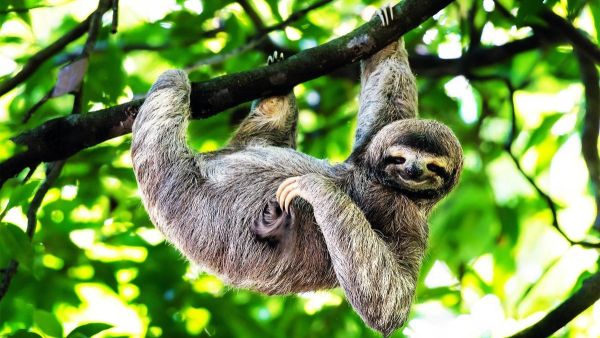
Sloths are true tree-dwellers, spending about 90% of their lives hanging upside down from branches. They eat, sleep, mate, and even give birth while suspended in the treetops. Their curved claws and strong limbs make them perfectly suited for this lifestyle. Living high above the ground helps them avoid predators like jaguars and snakes. For sloths, life among the trees is not just a choice, it’s the ultimate survival strategy.
-
UK house prices fall 0.1% in first October decline for years amid autumn Budget fears

-
Ted Kravitz ends Sky Sports F1's US GP coverage with key announcement live on air

-
When Obesity Saved Life: This Woman Survived A Gunshot Because Of Her Belly Fat

-
BBC legends who died penniless including Blue Peter star

-
Actor Pawan Singh’s estranged wife Jyoti files nomination from Bihar’s Karakat
